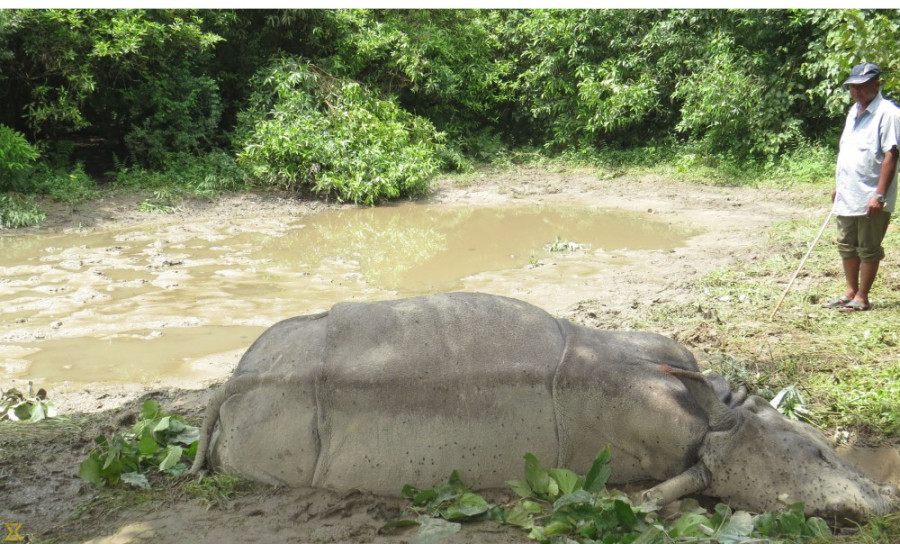Climate & Environment
Chitwan National Park builds and restores ponds for rhinos
Given the number of natural deaths among rhinos, the park has upgraded its ponds and water pits in a bid to stop infighting among themselves.
Ramesh Kumar Paudel
The Chitwan National Park and its bufferzone areas house 605 one-horned rhinos concentrated in an area of 932 square kilometres, according to the CNP official data. In the last fiscal year, 43 rhinos were found dead inside the CNP and its buffer zone areas. All of them were found to have died a natural death with seven believed to have died from wounds inflicted from fights.
“We suspect that most of the rhinos died fighting one another,” said Bed Kumak Dhakal, chief conservation officer of the CNP.
Rhinos confront each other when they find themselves in a constricted space, such as small ponds or water pits. Many rhinos in the park get injured in these fights.
The ones on the losing side find themselves searching for water pits to rest and recuperate in.
“After a fight, the winner rhino chases away the defeated one. The latter leaves in search of a pond but since it can’t find any close by, it dies of dehydration and infected wounds,” said Dhakal.
The CNP has around 200 natural ponds for its rhinos, but most are in a dilapidated state for lack of maintenance and repair. The scarcity of such water pits—natural and manmade—leads to frequent confrontations, subsequent fights and death of the rhinos at the park.
To limit the number of such fights, the CNP officials have started to restore old ponds in the park.
“We have built new ponds specifically for the defeated rhinos. We have also restored old ponds and cleared out the wetlands at the park so that the rhinos have enough space to play around,” said Dhakal. “And even if they do get into a fight, they can go to nearby water pits and recover.”
According to CNP officials, the park has upgraded 71 ponds at a cost of around Rs 13.65 million.
On January 28, a male rhino received serious injuries in a fight with another rhino in the park.
“It had sustained serious injuries on its body. We could not save him,” said Purusottam Pandey, a veterinarian. “If there were enough ponds to accommodate all the rhinos in the park, the rhinos would not fight among themselves.”
Park officials said that some baby rhinos at the park have also died from tiger and rhino attacks, while a few have died from falling off a cliff.
“We are conducting field studies to know more about the causes of rhino death and what can be done to avoid them,” Dhakal said.
However, Madhukar Malla, chairman of the CNP Buffer Zone Management Committee, said that the concerned authorities should intensify their research to find the reasons behind the increasing number of rhino deaths.
“The park officials cannot clearly tell us the exact reason behind these deaths. They must furnish us with proper answers,” Malla said.
According to a 2015 count, Nepal is home to 645 rhinos—605 in Chitwan, 29 in Bardia National Park, eight in Shuklaphanta National Park, and three in Parsa National Park.




 10.12°C Kathmandu
10.12°C Kathmandu1.jpg)








%20(1).jpg&w=300&height=200)

